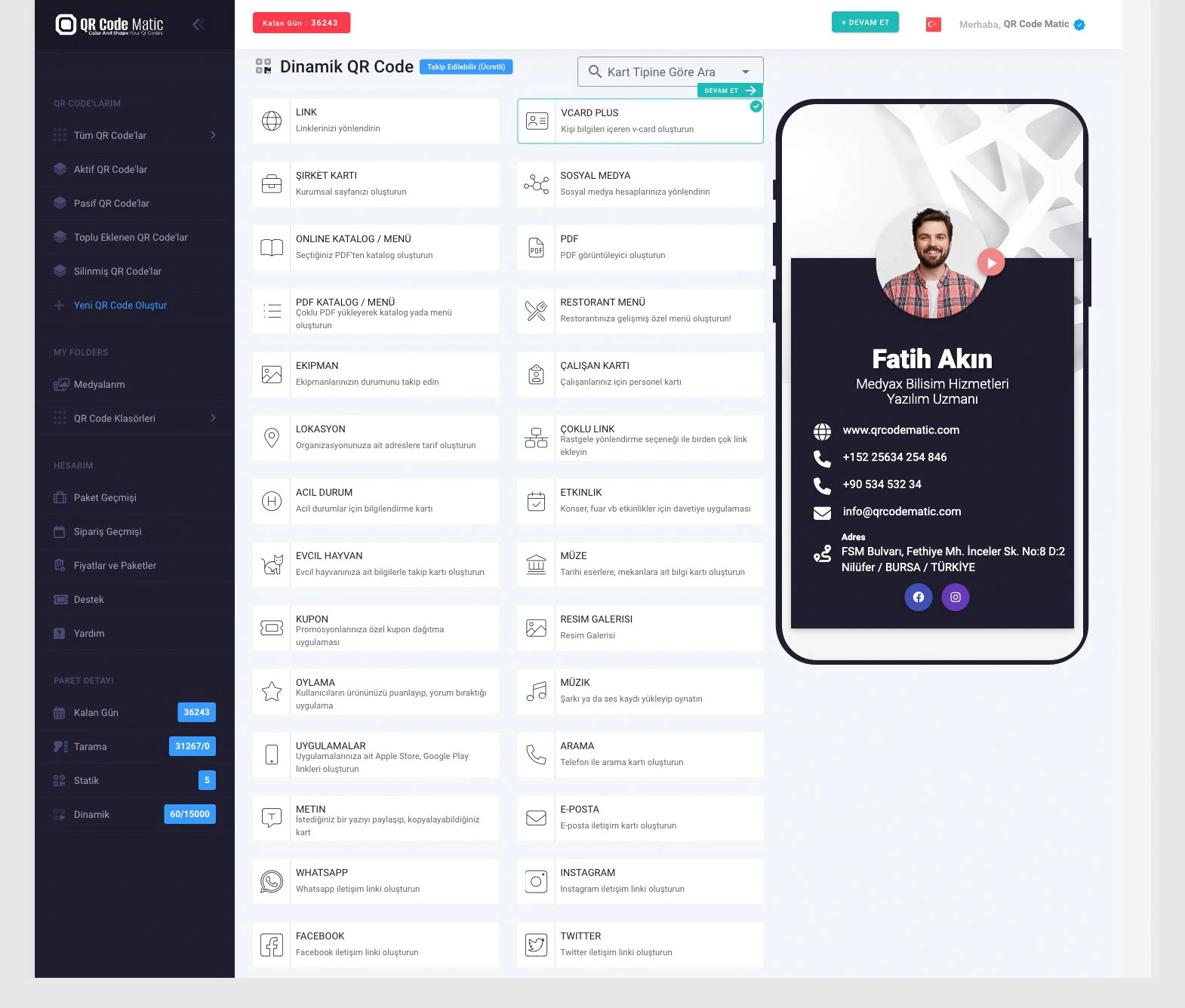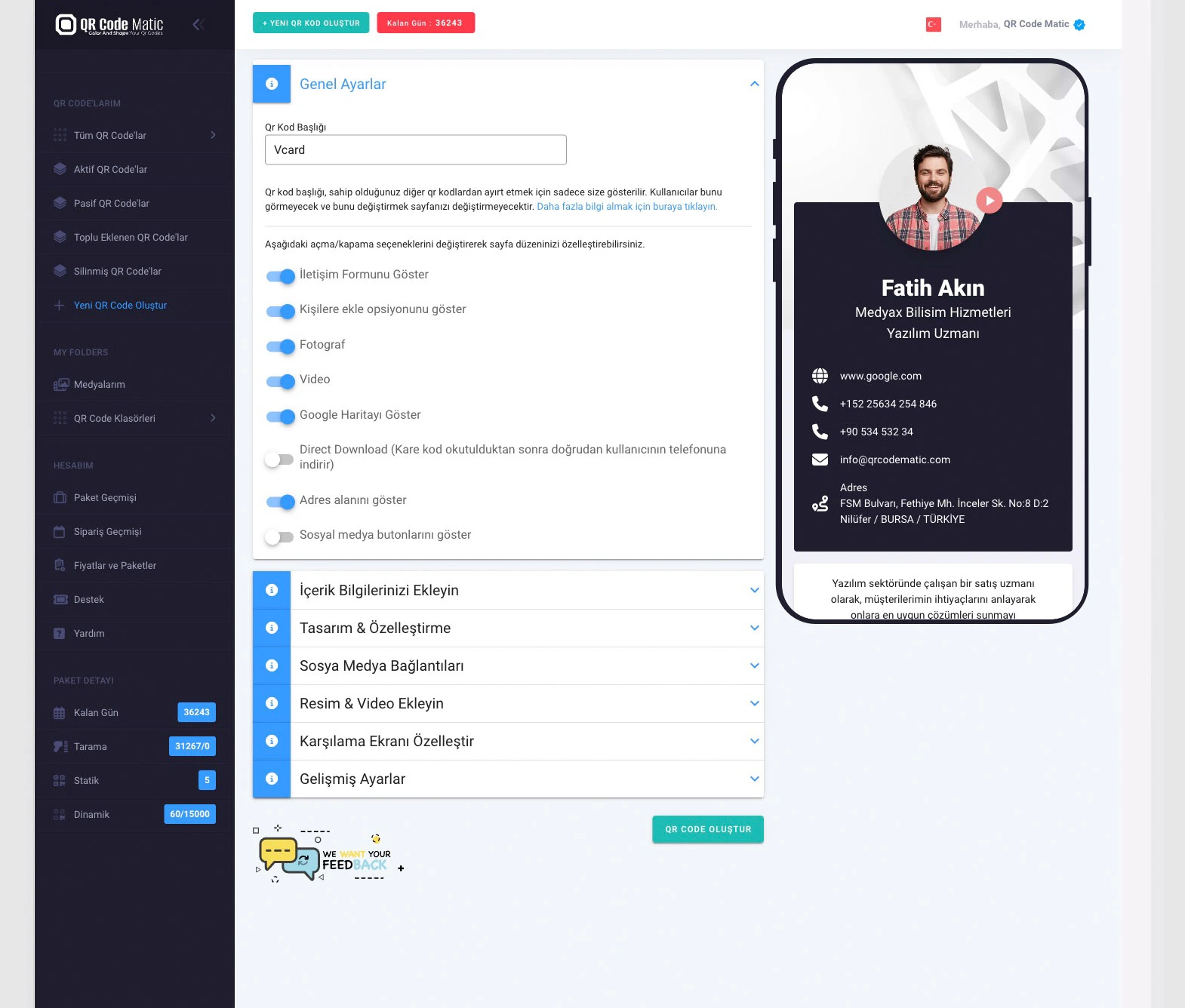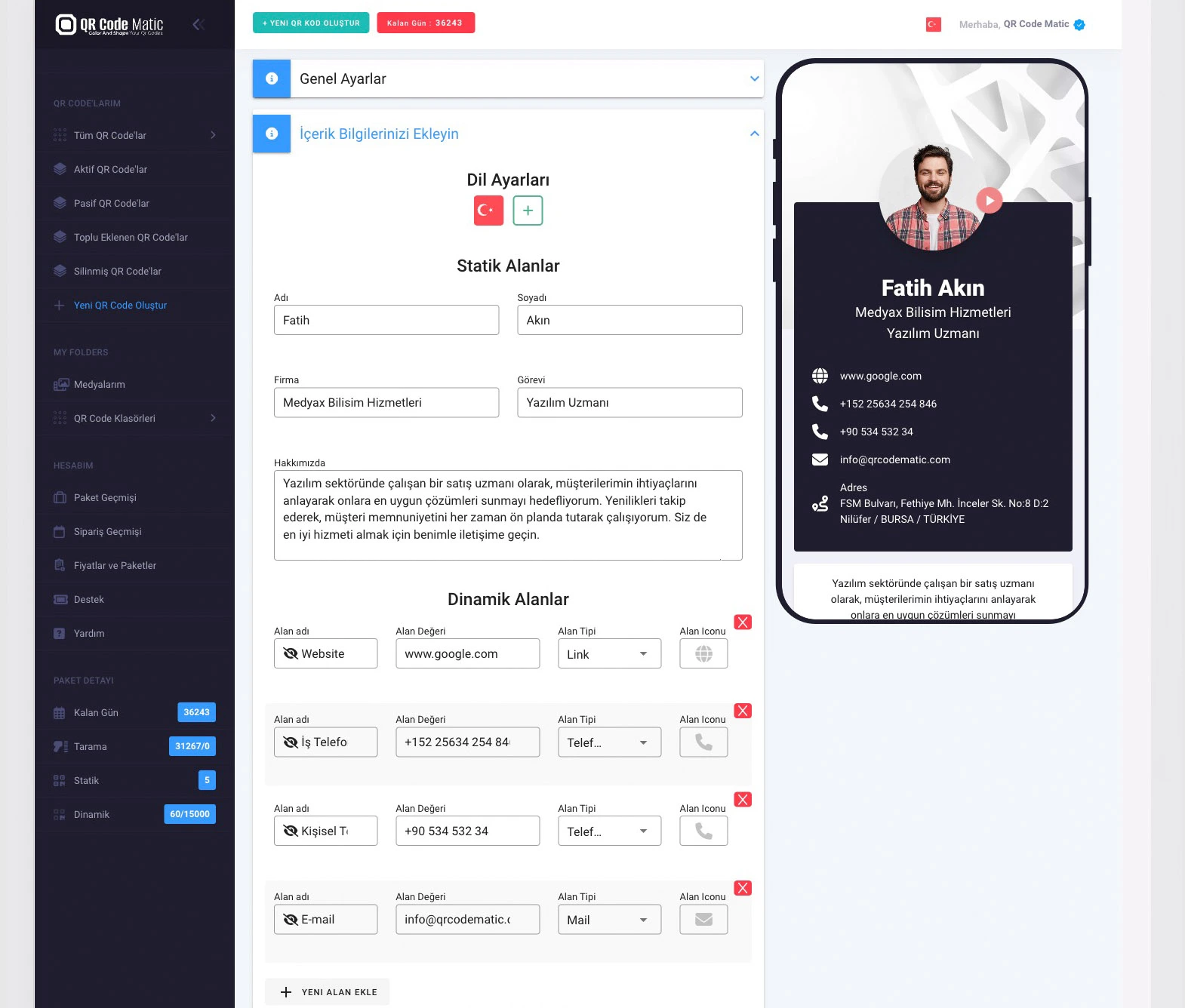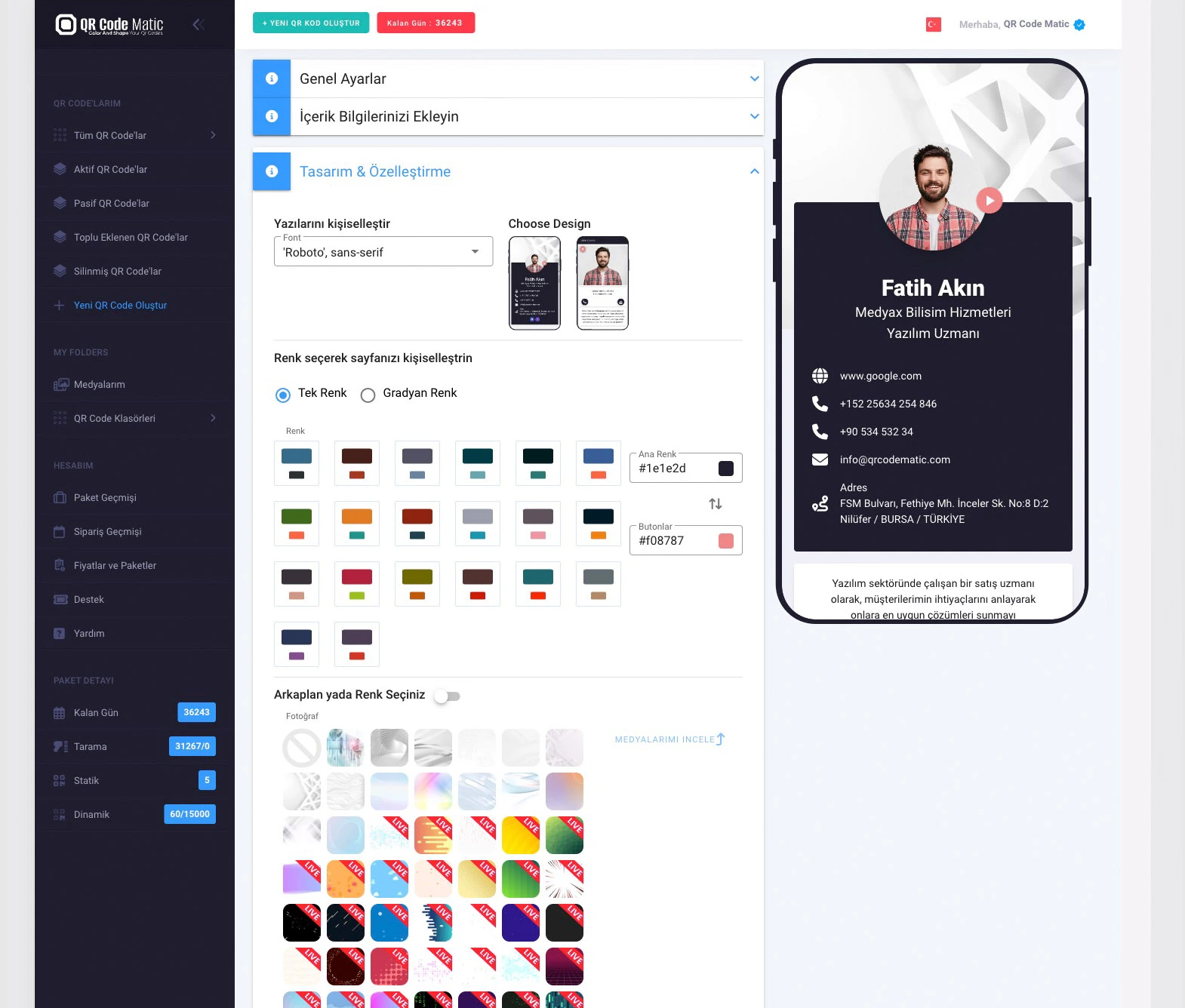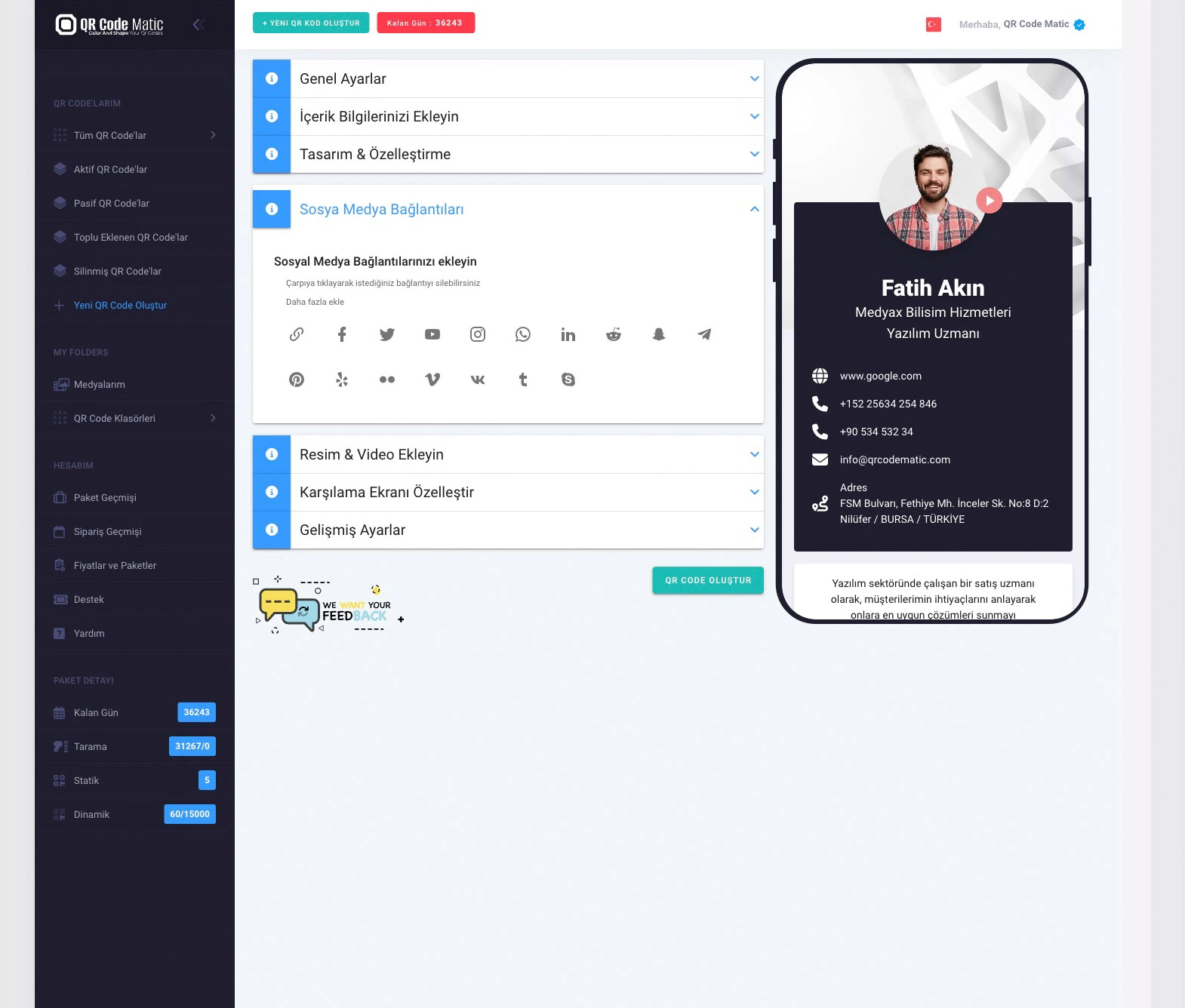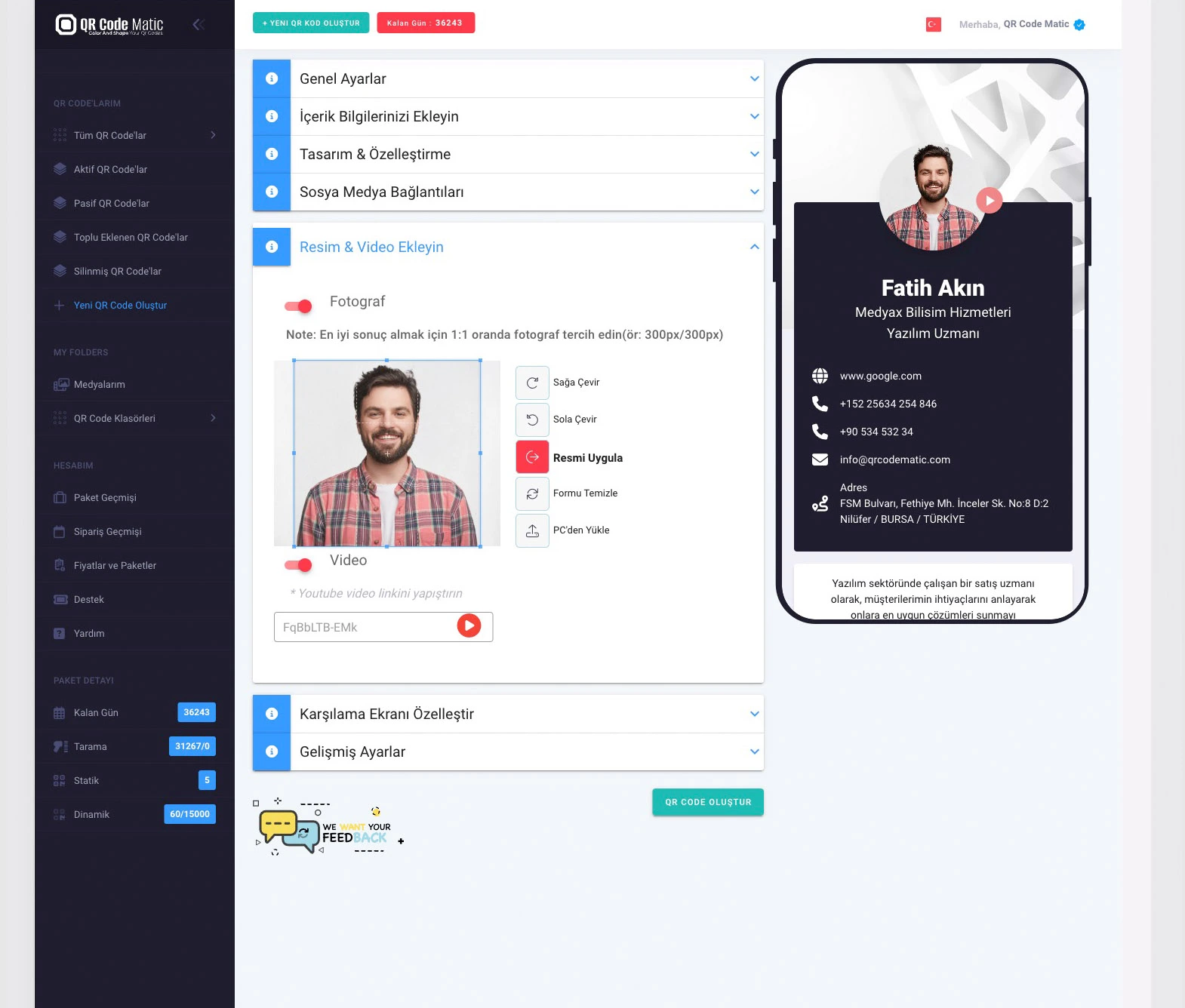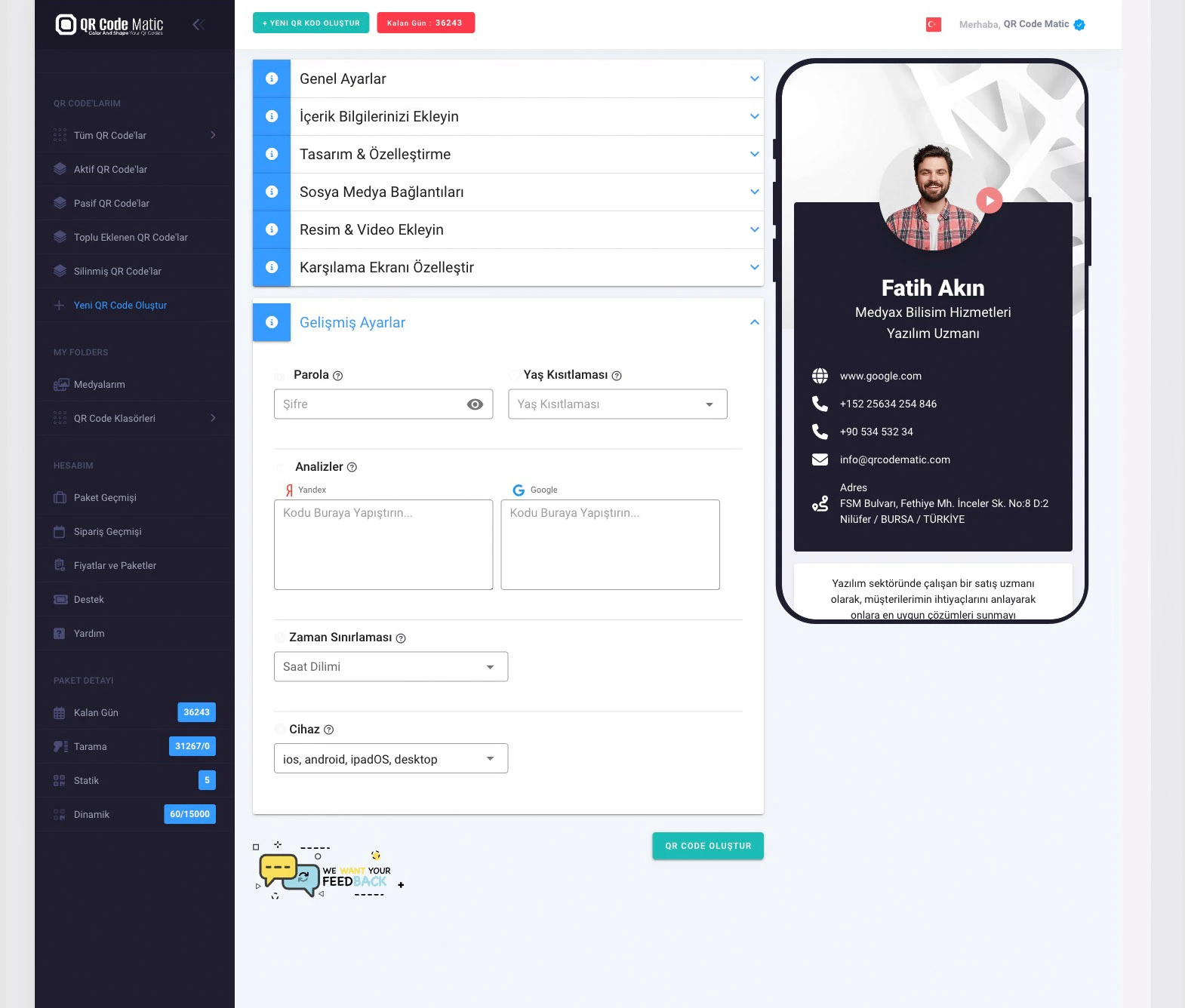QR codes used in television commercials and programs are a tool to provide viewers with a more interactive experience and easy access to targeted content. QR codes represent a square barcode displayed on the television screen, which viewers can scan using their smartphones to access relevant content. Here are some advantages of using QR codes in television commercials and programs:
Quick and Easy Access: QR codes enable viewers to access targeted content quickly and easily. By scanning the QR code displayed on the television screen with their smartphone cameras, viewers are directly redirected to the relevant webpage, application, or other digital content. This eliminates the hassle of typing long URLs or using search engines and allows viewers to experience the desired content instantly.
More Information and Content: QR codes provide access to additional information and content associated with television commercials and programs. For example, if a new product is introduced in a television advertisement, viewers who scan the QR code can explore the product's features, price, or ordering options in more detail. Additionally, QR codes used in television programs can offer viewers extra information such as program-related content, episode summaries, or actor profiles.
Interactive Contests and Campaigns: QR codes facilitate interactive contests and campaigns in television commercials and programs. For instance, if a competition related to a product is announced in a television advertisement, viewers who scan the QR code can participate in the contest.
Product Purchase and Ordering: QR codes provide the opportunity for product purchase or ordering in television commercials or programs. If a product showcased in an advertisement or program captures viewers' interest, those who scan the QR code can either purchase the product or have the option to examine it in detail. QR codes can turn television commercials into sales points for e-commerce companies and directly increase sales.
Increased Viewer Engagement: QR codes have the potential to increase viewer engagement through television commercials and programs. For example, viewers who scan the QR code during a live program broadcast can send questions to the program host or participate in live polls. This enhances the sense of being part of the program for viewers and makes the television experience more interactive.
Data and Analytics Opportunity: QR codes offer data collection and analysis opportunities for television commercials and programs. The behaviors, preferences, and interactions of viewers who scan the QR code can be tracked, and this data can be analyzed by brands or broadcasters. It provides valuable insights for better targeting, marketing strategies, and ad optimization.
Cost and Environmental Impact: QR codes present cost and environmental advantages in television commercials and programs. Printing or displaying QR codes on television screens is more economical and environmentally friendly compared to producing and distributing physical materials. Additionally, QR codes reduce paper consumption and minimize environmental impact by enabling access to digital content.
In conclusion, QR codes are a powerful tool for providing interactive and quick access in television commercials and programs. They offer viewers more information, interactive experiences, convenience in product purchase or ordering, and the opportunity to increase viewer engagement. Additionally, they enable data collection and analysis for more effective marketing strategies. With the widespread use of QR codes in television commercials and programs, the television experience can become more interactive and personalized.
